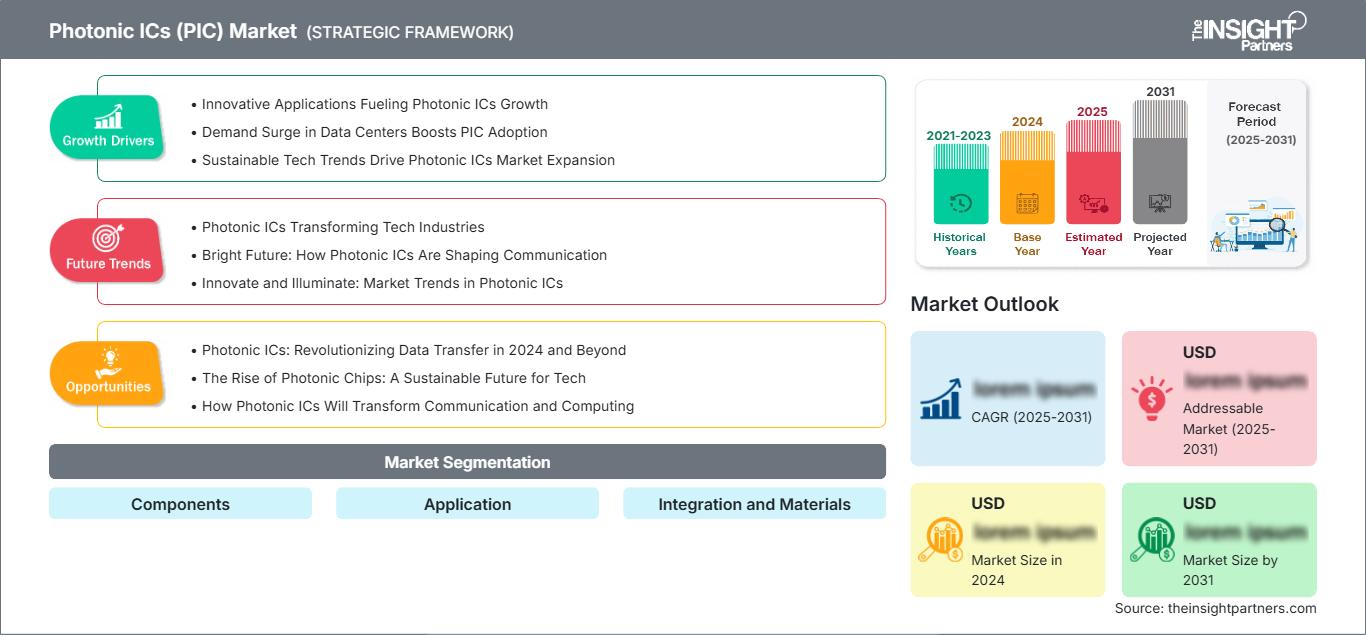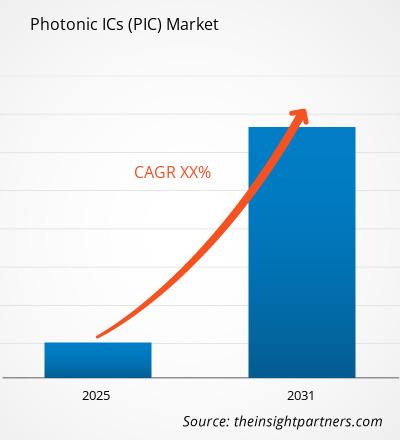页面已更新 :
May 2018
光子集成电路 (PIC) 的功能类似于电子集成电路 (IC),它利用光子而非电子来传输数据。光子作为光的单位,其传播速度远快于其他数据载体,因此数据传输速度显著提升。全球光子集成电路市场预计将以惊人的速度增长,因为它在系统尺寸、功耗、成本和可靠性方面均有显著提升。根据应用领域,全球光子集成电路市场可细分为生物光子学、光通信、传感器、光信号处理和纳米光子学。全球光子集成电路市场进一步根据集成方法细分为单片集成、混合集成和模块集成。此外,全球光子集成电路市场还根据组件细分,包括:调制器、激光器、复用器/解复用器、探测器、光放大器和其他组件(例如衰减器、波长转换器等)。市场按材料细分,包括:铌酸锂 (LiNbO3)、磷化铟 (InP)、硅 (Si)、砷化镓 (GaAs) 和硅基硅。由于电子集成电路 (IC) 不断寻求在单个硅衬底上集成更多晶体管,其性能受到限制,迫使业界发明替代品。此外,现有主要参与者已开发出单片集成的磷化铟光子集成电路 (InP),可在单个芯片中集成 600 多个组件/功能。因此,市场竞争异常激烈,因为每个参与者都致力于发明基于光子集成电路的产品,这些产品能够以低成本集成大量功能/功能。将调制器、探测器和激光器等各种光学模块集成到单个封装中,从而节省预算和成本,是光子集成电路市场参与者关注的重点领域。高速通信需求的不断增长,以及应用领域的不断发展,尤其是在传感、光通信和生物光子学领域,共同推动了全球光子集成电路市场的发展。此外,光子集成电路的高功率效率、低成本制造、更高的可靠性和高数据传输率,预计将推动该市场的发展。利用光子驱动高速信息处理、计算和数据传输,为光子集成电路市场的发展提供了良好的前景。光学传感器应用是该市场的一个新兴应用领域,广泛应用于航空航天、国防、交通运输、能源和医药等领域。量子计算是一项即将实现商业化的技术,也是另一个有望大幅利用光子集成电路的领域。光子集成电路同样应用于生物医学领域,其中基于InP的确定性光子集成电路正用于不透明皮肤组织的诊断检查。光通信是光子集成电路市场的主要应用领域,而生物光子学和传感是其他关键的应用领域。尽管目前光信号处理领域的投入最小,但预计量子计算商业化后该领域将取得强劲发展。北美引领全球光子集成电路市场,其次是欧洲和亚太地区。虽然北美是主要的光子集成电路市场,但预计亚太地区将出现强劲增长,超过欧洲,最终超过北美。亚太地区的发展主要归功于光通信和生物光子学应用日益增长的需求。全球光子集成电路市场极其分散,参与者众多。一些顶级参与者包括阿尔卡特朗讯公司、英飞朗公司、捷迪信单相公司、华为技术有限公司、安华高科技有限公司、英特尔公司、安捷伦科技、讯远通信公司、安科公司和新光子公司。


自定义此报告以满足您的要求
您将免费获得任何报告的定制,包括本报告的部分内容,或国家级分析、Excel 数据包,以及为初创企业和大学提供超值优惠和折扣
光子集成电路(PIC)市场: 战略洞察

- 获取本报告的主要市场趋势。这个免费样本将包括数据分析,从市场趋势到估计和预测。
光子集成电路(PIC)市场区域洞察
The Insight Partners 的分析师已详尽阐述了预测期内影响光子集成电路 (PIC) 市场的区域趋势和因素。本节还讨论了北美、欧洲、亚太地区、中东和非洲以及南美和中美洲的光子集成电路 (PIC) 市场细分和地域分布。
光子集成电路(PIC)市场报告范围
| 报告属性 | 细节 |
|---|---|
| 市场规模 2024 | US$ XX million |
| 市场规模 2031 | US$ XX Million |
| 全球复合年增长率 (2025 - 2031) | XX% |
| 历史数据 | 2021-2023 |
| 预测期 | 2025-2031 |
| 涵盖的领域 |
By 成分 |
| 覆盖地区和国家 | 北美
|
| 市场领导者和主要公司简介 |
|
光子集成电路 (PIC) 市场参与者密度:了解其对业务动态的影响
光子集成电路 (PIC) 市场正在快速增长,这得益于终端用户需求的不断增长,而这些需求的驱动因素包括消费者偏好的不断变化、技术进步以及对产品优势的认知度不断提高。随着需求的增长,企业正在扩展其产品线,不断创新以满足消费者需求,并抓住新兴趋势,从而进一步推动市场增长。

- 获取 光子集成电路(PIC)市场 主要参与者概述
- 历史分析(2 年)、基准年、预测(7 年)及复合年增长率
- PEST和SWOT分析
- 市场规模、价值/数量 - 全球、区域、国家
- 行业和竞争格局
- Excel 数据集
近期报告
客户评价
购买理由
- 明智的决策
- 了解市场动态
- 竞争分析
- 客户洞察
- 市场预测
- 风险规避
- 战略规划
- 投资论证
- 识别新兴市场
- 优化营销策略
- 提升运营效率
- 顺应监管趋势
我们的客户































87-673-9708

ISO 9001:2015



 获取免费样品 - 光子集成电路(PIC)市场
获取免费样品 - 光子集成电路(PIC)市场